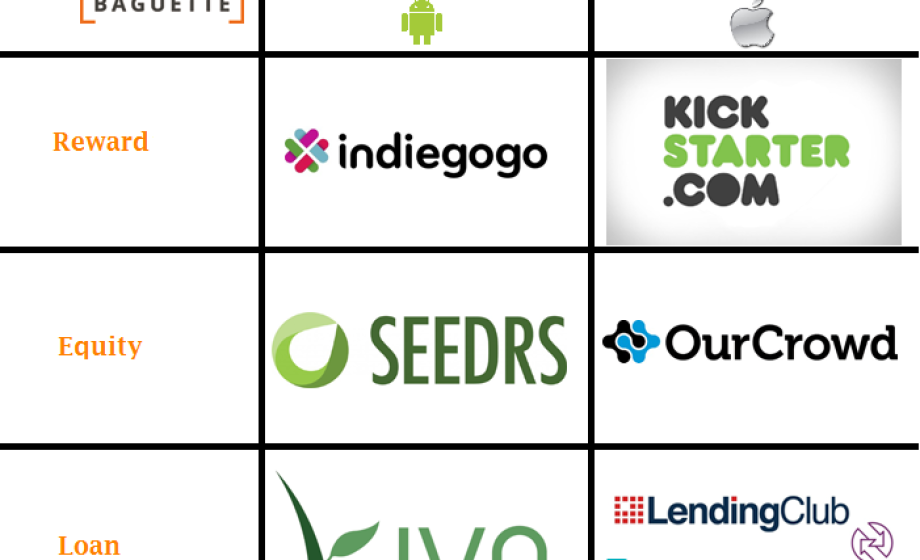
Crowdfunding is a hot-topic these days, and ever since I was invited to animate a panel at IdeaLab! last October, I’ve been trying to wrap my head around the evolution, the trends, knowing that not every platform that forms today will exist in 5 years, and that not every possible outcome has been tried before.
Over the past few months, I managed to come up with a system not only for categorizing crowdfunding platforms (most of them categorize themselves quite well) but in determining whether I think they will be successful or not. Of course, execution plays a role, but if you start with a bad base, you may be doomed from the start.
The first step for me was to define what exactly is a crowdfunding platform. To keep it general, I decided it was any platform that allowed for the pooling of resources of many people – these resources can go to a company, an individual, or even to a cause. This lines up pretty well with Wikipedia’s one-liner on Crowdfunding, so I think I’m safe here.
When I began looking at the space, the first axis of development was quite clear: Rewards, Equity, and Loans. The “return” for those giving the money can come in these three forms.
The next axis was more difficult: Open vs. Closed. I often refer to this as the “Apple vs. Android” market set-up, but “Curated vs. Meritocratic” works well, too – I talk more about that here. Looking at rewards-based crowdfunding, we instantly see Kickstarter vs. Indiegogo. The two can live in harmony because they attract two different ‘mindsets’ – not necessarily two separate markets, but two different ways of approaching a situation.
In the Loans-based crowdfunding space, we see this with Kiva as the dominant ‘open’ platform, and players like Lending Club, Pret d’Union & Funding Circle in the “Curated” section. This space is interesting because traditional lending players tend to stick to particular markets – hence including Lending Club & Pret d’Union – but also because there seems to be a mental distinction between consumer vs. enterprise, which doesn’t exist in Rewards or Equity-based crowdfunding (the latter, because equity is restricted to enterprise). With Lending Club’s IPO and Pret d’Union’s fundraising (both founded by French entrepreneurs, FYI), it will be curious to see if there will be consolidation (read: acquisition) in the coming years, or if these players will stick to their respective markets.
Lastly, in Equity crowdfunding, I think we’re only starting to see the beginning. While players like Ourcrowd are curating (and even backing their investments), I don’t think we’ve seen a dominant “Open platform” for crowdfunding equity – or at least, there is a doubt about how mass-adopted this will be. Players like Ourcrowd are interesting because they are allowing “the crowd” to participate in their rounds of funding – that’s how I see it, at least – open platforms, however, have yet to show that they are aligning their business model (revenue) with the equity side of things, so I’m curious to see how this will evolve.
What about Verticals? Crowdfunding for X? And Markets?
As mentioned in the Lending section, whether or not certain types of funding will be restricted to markets remains to be seen – everything we’ve learned about the Internet would suggest not, however. That isn’t to say that players like Kisskissbankbank & Ulule will not carve out a nice space for themselves, just that the lion’s share will go to Kickstarter/Indiegogo.
As for verticals, I’m highly skeptical of “Crowdfunding for X” – I recently was introduced to Teezily – Crowdfunding for T-Shirts. I don’t think I need to say more. Frankly, I don’t think vertical-based platforms will receive the critical mass needed to survive. I’d be curious to see from larger players like Indiegogo & Kickstarter how many cross-category funders there are, but I imagine the same person crowdfunding a video game is likely to crowdfund a film as well.
Players like Leetchi still leave me scratching my head. I would likely call this “crowdfunded commerce,” if I was sure it was going to carve out its own positioning; however, I’m not sure that other platforms couldn’t eventually integrate a similar commerce feature into their sites. Then again, it doesn’t seem to be in the DNA of the largest players.
What to take away from this
I have more or less declared my bullish or bearish stance on nearly every crowdfunding platform in existence today. I strongly believe that, in these 6 slots, we will see one dominant player rise (we’ve already seen that in some of the spaces) to take the lion’s share of the market, and I strongly believe this will be based on their ability to align their platform’s philosophy & positioning with these Axes.
How an Open, Equity-based crowdfunding platform will look, I’m not sure – perhaps it will be a data-driven VC fund which uses algorithms to determine success rates; perhaps it will be Seedrs, or someone similar to them. For now, the cross-border equity participation market is under-developed – it’s just not that easy to make an Indiegogo via Equity happen – but I think that if you’re looking at a platform today, you should strongly look at their positioning, their ‘currency,’ and any market/vertical restrictions they are placing on themselves.

